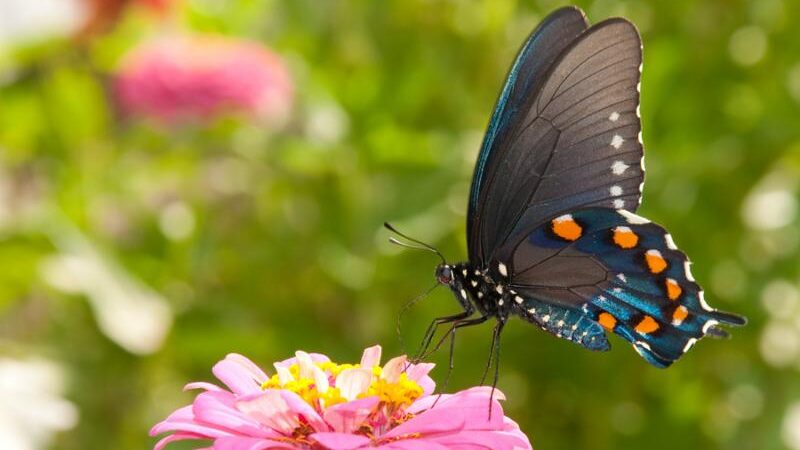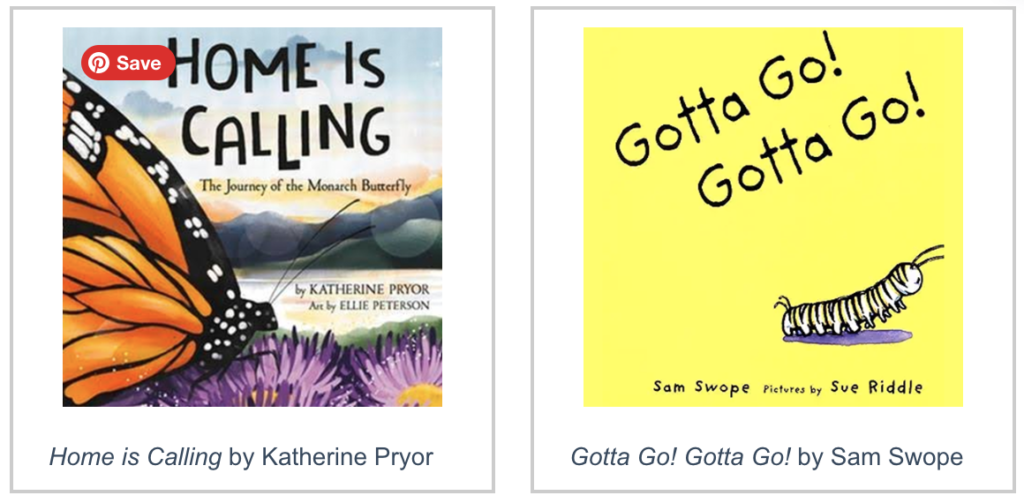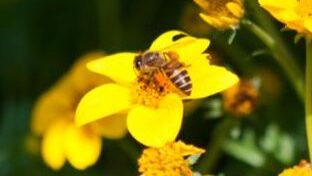Pollinator Q&A

You may also notice a recurring theme through our newsletters this year as we focus on pollinators. Join us as we explore this important aspect of nature, including how it can be incorporated into the school garden. To start things off, we’ll lay a foundation with some broad basics in this Q&A.
Q: What is pollination?
A: Pollination is an essential part of plant reproduction. Some plants may be self-pollinating, while others require wind or insects to move the pollen. For example, pollen from a flower’s anthers (the male part of the plant) may rub or drop onto an insect pollinator that is passing or visiting the flower (sometimes for nectar). The insect pollinator then carries this pollen to another flower where the pollen sticks to the stigma (the female part). With a little luck and a lot of nature’s wonder, the pollen travels to the flower ovary resulting in a fertilized flower that will later yield fruit and seeds.
Q: Why is pollination important?
A: Pollination is important for a strong, healthy ecosystem. It has been said that one in three bites of food you eat depends on pollinators. That is a real concern for threats to pollinator populations. Have you ever considered the foods that depend on pollination? All of these and more–apples, oranges, lemons, limes, avocados, peaches, pears, plums, cherries, blueberries, cranberries, tomatoes, squash, melons, pumpkins, cucumbers, kiwi, figs, strawberries, blackberries, raspberries, grapes, almonds, coffee, and cacao (that’s right…coffee and chocolate!). Don’t just think about the fruit, but think about all the many food products, from orange juice and fruit-filled breakfast bars, to pasta sauce, guacamole and even ketchup!
Q: Who are our pollinators?
A: Honey bees are the celebrities of the pollinator world, and they are certainly important contributors; but there are others that you might not have even considered. As mentioned earlier, wind can transfer pollen, but here is a list of animal pollinators playing second fiddle to the honey bee.
- ants
- bats
- bumble bees
- beetles
- butterflies
- flies
- hummingbirds
- moths
- spiders
- wasps
Q: What is pollinator migration?
A: Most folks are aware of bird migration, but have you ever considered that other creatures, including pollinators, also migrate? Some pollinators migrate seasonally; perhaps most familiar is the monarch butterfly. As temperatures drop and food resources dwindle, pollinators will move toward warmer climates. Some pollinators are known to travel as many as 1,000 miles between their summer and winter habitats just to survive. The path between a pollinator’s summer and winter habitat is called a migratory corridor. Pollinators that migrate time their journey to coincide with the flowering and fruiting of different plants en route. They depend on irregular patches of flowering plants that guarantee rest and food as they travel. As climate patterns change, we are observing that many pollinators adapt their migration patterns in order to survive.
Here are a couple children’s books to check out to learn more about monarch migration.

Q: What is pollinator hibernation?
A: If asked to name an animal that hibernates, I suspect “bear” would the be most popular answer and “bees” might not even make the top 10 list. Some pollinators also use hibernation in a similar way that bears do. Hibernation is when animals slow down their body systems to a dormant state as a survival mechanism when faced with a threatening environment or food scarcity, as can occur during the winter season. Like bears, pollinators must increase the amount of food they eat and store, and find a safe place to hide until weather and food conditions improve.
Learn more about the migration or hibernation practices of butterflies, hummingbirds, bats and bees.
Fun Facts

Honey bees communicate through a waggle dance in which scout bees return to the nest and dance to inform other bees about the distance and direction of a newly discovered flower patch.
Bumblebees are living tuning forks, using a middle C tone to propel thousands of pollen grains from a flower in under a second.
- Categories: